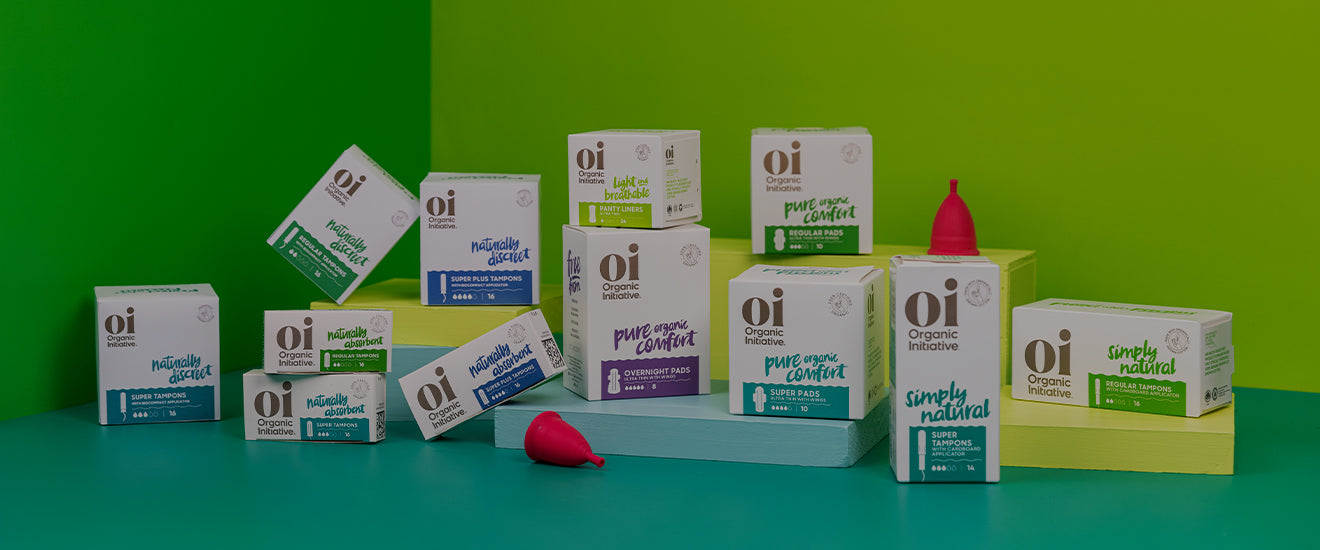Ever had a bit of wee come out when you’re laughing or felt a sudden uncontrollable urge to urinate, even though you just went? Whether you’re an adolescent, pregnant or post-menopausal woman, bladder health issues such as urinary incontinence and urinary tract infections (UTIs) can put a dampener (literally) on your day. A healthy bladder is important at any age, allowing you to live an active, confident, and comfortable life. So how can you ensure yours is functioning at its best? This article explains everything you need to know. From the issues impacting bladder health to the essential steps to look after yours, we’ve got you covered in our go-to down-below guide. Read on
Pee when you laugh? You might have urinary incontinence.
While it might not feel like a laughing matter, urinary incontinence is incredibly common. Half of women over 50 experience bladder leakage – and approximately 20% of those under 44 as well. Referring to the involuntary leakage of urine, urinary incontinence can be caused by various factors, including pregnancy, childbirth, menopause, obesity and certain medical conditions.
There are three primary types: stress incontinence (where sneezing, laughing etc may cause a small amount of leakage), urge incontinence (where you may not make it to the bathroom in time) and mixed incontinence (a combination of both). Over time, your leakage may resolve naturally (for example, after giving birth) or with treatment from a health professional. But there’s no need to stop living life to the full while you wait! Discreet and non-irritating with an odour-control core, our Organic Initiative Adult Care Pads and Liners will keep you fresh, dry and comfortable.
Feel the burn – understanding UTIs and cystitis.
Urinary Tract Infections (UTIs) occur when bacteria enter the urinary tract, causing discomfort and pain. Women are more susceptible to this type of infection due to their shorter urethra, which provides an easier pathway for bacteria. Signs of a UTI include an intense and sudden need to urinate, frequent passing of small amounts of wee, a burning sensation when you go, pelvic pain and cloudy, bloody or foul-smelling urine.
Also known as cystitis, a bladder infection is a type of UTI that occurs when bacteria enter the bladder itself and cause inflammation.
While mild UTIs may clear up on their own, UTIs can be dangerous when the infection spreads to the kidneys. It’s therefore recommended to see a doctor ASAP. They will most likely prescribe a course of antibiotics to clear the infection
Tips for a happy, healthy bladder
Your bladder can have a big impact on your day-to-day life, so keep yours functioning at its best with the following tips.
Stay hydrated
Drinking plenty of water throughout the day promotes bladder health and supports proper urinary function. Aim for at least 8 glasses of water daily to help flush bacteria from the urinary tract.
Try cranberry for UTI prevention
While the cranberry debate has been raging for years, a recent review of the research supports the consumption of cranberry juice or supplements to reduce the risk of UTIs. How does it work? By stopping pesky bacteria from sticking to the urinary tract walls.
Don’t hold on
Don't delay trips to the bathroom when you feel the urge to go. Holding in urine for prolonged periods can weaken the bladder muscles and allow bacteria to multiply.
Urinate after sex
Here’s a hot tip for your newly coupled-up friend who’s cursed with constant UTIs. Always empty the bladder after getting intimate as this helps remove any bacteria that's entered the urethra during intercourse.
Maintain a healthy weight
Excess weight can put pressure on the bladder and pelvic muscles, contributing to urinary incontinence. So, strive for a healthy weight with a nutritious diet and regular movement.
Wipe from front to back
Good wiping habits go a long way to preventing UTIs. The rule? Always wipe from front to back after using the toilet to avoid transferring bacteria from the anus to the urethra. Easy.
Do your pelvic floor exercises
Engage in pelvic floor exercises (Kegels) regularly to strengthen the muscles that support the bladder. These exercises can be performed discreetly and help to strengthen the pelvic floor muscles, which play a pivotal role in bladder control. Here’s how to exercise your pelvic floor the RIGHT way.
Quit smoking
If you’re struggling to butt out, consider this: smoking can irritate the bladder lining and increases the risk of bladder cancer. Quitting smoking is one of the best ways to improve your overall wellbeing – while supporting bladder health.
Limit irritating drinks and foods
Reconsider that fifth latté or glass of rosé. Excessive consumption of caffeine, alcohol, and highly acidic or spicy foods can irritate the bladder. So make sure you consume in moderation.
Manage chronic health conditions
Conditions like diabetes can also affect bladder health. Managing chronic health issues through proper medical care and lifestyle adjustments can make a big difference.
Where can you get help for bladder issues?
Maintaining a healthy bladder is essential for your overall wellbeing and quality of life. By following these practical tips and adopting healthy habits, you can reduce the risk of common bladder health issues such as urinary incontinence and UTIs.
If you’re experiencing bladder leakage, a women’s health physiotherapist or urologist can provide you with exercises, treatments and/or medication to retrain your bladder and address pelvic floor dysfunction. And if you’re suffering from a UTI? Make a trip to your GP your top priority.

No Greenwashing.
Period.
